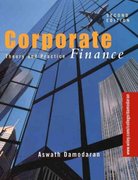13. Sora Industries has 65 million outstanding shares, $126 million in debt, $48 million in cash, and the following projected free a. Suppose Sora's revenue and free cash flow are expected to grow at a 3.4% rate beyond year 4. If Sora's weighted average cost of capital is 13.0%, what is the value of Sora's stock based on this information? b. Sora's cost of goods sold was assumed to be 67% of sales. If its cost of goods sold is actually 70% of sales, how would the estimate of the stock's value change? c. Let's return to the assumptions of part (a) and suppose Sora can maintain its cost of goods sold at 67% of sales. However, now suppose Sora reduces its selling, general, and administrative expenses from 20% of sales to 16% of sales. What stock price would you estimate now? (Assume no other expenses, except taxes, are affected.) d. Sora's net working capital needs were estimated to be 18% of sales (which is their current level in year 0). If Sora can reduce this requirement to 12% of sales starting in year 1, but all other assumptions remain as in part (a), what stock price do you estimate for Sora? (Hint: This change will have the largest impact on Sora's free cash flow in year 1.) a. Suppose Sora's revenue and free cash flow are expected to grow at a 3.4% rate beyond year 4. If Sora's weighted average cost of capital is 13.0%, what is the value of Sora's stock based on this information The stock price for this case is $_ (Round to two decimal places.) b. Sora's cost of goods sold was assumed to be 67% of sales. If its cost of goods sold is actually 70% of sales, how would the estimate of the stock's value change? The stock price for this case, when COGS increases, is $ (Round to two decimal places.) c. Let's return to the assumptions of part (a) and suppose Sora can maintain its cost of goods sold at 67% of sales. However, now suppose Sora reduces its selling, general, and administrative expenses from 20% of sales to 16% of sales. What stock price would you estimate now? (Assume no other expenses, except taxes, are affected.) The stock price for this case, when selling and SG&A costs decrease, is $_ (Round to two decimal places.) d. Sora's not working capital needs were estimated to be 18% of sales (which is their current level in year O). If Sora can reduce this requirement to 12% of sales starting in year 1, but all other assumptions remain as in part (a), what stock price do you estimate for Sora? (Hint. This change will have the largest impact on Sora's free cash flow in year 1.) The stock price for this case, when working capital needs are reduced, is $ (Round to two decimal places.) tu 105 1: Data Table (Click on the following icon in order to copy its contents into a spreadsheet.) Year 0 1 2 3 Earnings & FCF Forecast ($ million) 1 Sales 433.0 468.0 516.0 547.0 574.3 2 Growth vs. Prior Year 8.1% 10.3% 6.0% 5.0% Cost of Goods Sold (313.6) (3457) (366.5) (384.8) Gross Profit 154.4 170.3 180.5 189.5 6 Selling. General & Admin (93.6) (103.2) (1094) (114.9) 8 Depreciation (7.0) (7.5) (9.0) (9.5) 7 EBIT 53.8 59.6 621 65.2 8 Less: Income tax at 40% (21.5) (23.8) (248) (261) Plus: Depreciation 7.0 75 20 10 Less: Capital Expenditures (7.7) (100) (9.9) (104) 11 Less: Increases in NWC (63) (8.6) (56) (4.9) 12 Free Cash Flow 25.3 24.6 30.8 9.5







